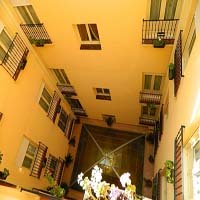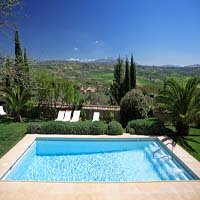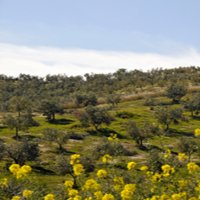Gibraltar
Gibraltar - Is this Spain?
Gibraltar isn’t part of Spain, but its location on the southern tip of the Iberian Peninsula means it’s a quick, easy trip for travelers who are spending time in beautiful Andalusia. Currently a British Overseas Territory under the jurisdiction of the United Kingdom, it guards the only portal between the Atlantic Ocean and the Mediterranean Sea – the Strait of Gibraltar.
Because of its strategic location, the region has been coveted by various foreign powers for thousands of years. Gibraltar has a fascinating history, and with influences from Europe, the Near East and North Africa, its culture is unlike any other in Iberia.
Undoubtedly, the first thing that pops to mind when most people think about Gibraltar is the rugged, rocky cliff we call the Rock of Gibraltar. It’s an imposing sight and something that every traveler who’s in the area should check out, but that’s easy because it’s so hard to miss! It’s also become a symbol of enduring strength, solidity and dependability (a major American insurance company uses the Rock of Gibraltar as its logo and even refers to itself as “The Rock”).
Much of the upper portion of the Rock is set aside as a nature preserve (called the Upper Rock Nature Reserve) that’s inhabited by over two hundred Barbary macaques (Europe’s only wild monkeys and an endangered species). The macaques and an extensive network of tunnels in the cliff (excavated during 18th-century sieges and expanded during World War II) have evolved into popular tourist attractions. A cable car makes things easy by running from the base of the Rock to the top, with an intermediate stop along the way.
Its iconic landmark isn’t the only game in town – it’s just the most famous. There’s a lot more to see and do. First, though, let’s talk a bit about the history of the place. It’s far from boring, and it will help you understand why Gibraltar is the way it is today.
A Little History Lesson
Gibraltar sits at the far western edge of the Mediterranean Sea. It’s a long way from the Near East, but the ancient Phoenicians (who were based on the coast of what is now Lebanon) were the first civilization to occupy it in recorded history. They regarded it as the edge of the known world. What lay past the Strait of Gibraltar, in the Atlantic Ocean, was the great unknown.
A little later in time, the
ancient Greeks started referring to the Rock of Gibraltar as one of the
two “Pillars of Hercules.” According to Greek mythology, the area
marked the westernmost point to which Hercules traveled during his 12
labors. The other pillar (on the African side of the Strait) was
Ceuta’s Monte Hacho (Mons Abyla) or Jebel Musa in what is now Morocco.
Plato believed the lost continent of Atlantis was situated somewhere in
the ocean beyond Gibraltar.
The ancient Romans occupied and held Gibraltar until the Empire started to crumble and the barbarian Vandals took over. The area’s next conquerors of any note were the Moors of northern Africa, the Islamic wave that dominated so much of southern Spain for hundreds of years. Although European Christians hotly contested the Moorish presence in Iberia, the Moors were responsible for many medical and scientific advances during the Dark Ages. They also created the Alhambra and dozens of other magnificent buildings in southern Spain.
Before being driven out by the Spanish, the Moors settled here for over 700 years, leaving behind the Moorish Castle visitors can still see today. The Moorish Castle’s principal remaining structure, the “Tower of Homage,” is a massive brick-and-concrete building that served as the rulers’ living quarters and the site of a Moorish bath.
In 1704, during the War of the Spanish Succession, a combined English-Dutch force ousted the Spanish from Gibraltar (long story). The area was ceded to the British “in perpetuity” under the terms of the Treaty of Utrecht that ended that war. Since then, Gibraltar has been an important base for the British Royal Navy, among other things playing an important role prior to the Battle of Trafalgar. The local economy now revolves around tourism, banking services, shipping, and the presence of Britain’s naval forces. The subtropical Mediterranean climate, with mild winters and warm summers, is perfect for travel and tourism.
Today, control of the area remains a sore spot in the relationship between Spain and the U.K. The area remains under the sovereignty of the British. Its inhabitants have overwhelmingly voted to reject Spanish control more than once in the past 50 years.
Things to See and Do
Besides seeing the Rock, its network of tunnels and its Barbary macaques, visitors frequent the town’s shopping spots because all the goods and services purchased there are VAT-free. Some streets are pedestrianized, making leisurely strolls safe and easy.
On top of all that, Gibraltar also offers hiking, boating, dolphin- and whale-watching, casinos, botanical gardens, Moorish and British fortifications, the unique exhibits at the Gibraltar Museum, a public market and much more. A colorful Changing of the Guard Ceremony takes place several times a day.
English is the official
language, but many of the residents also speak Spanish. Nightclubs and
pubs offer entertainment along with delicious food. The local cuisine
is rich and diverse, reflecting the groups who have occupied this area
over the centuries. Culinary influences include British, Andalusian,
North African, Arabic, Italian and Portuguese. People staying in
southern Spain’s resorts have been known to make the jaunt to Gibraltar
for some classic English fish and chips as a break from tapas and other
traditional Spanish dishes.
Conclusion
Gibraltar isn’t large, comprising only slightly over 2 ½ square miles (6.7 square kilometers). Despite its tiny size, it sits at the point where Mediterranean meets Atlantic and where Europe comes close to meeting North Africa. And, it’s steeped in history. Each of the peoples that have occupied Gibraltar over the years has left its own indelible mark on the area. It’s an easy, quick day trip from southern Spain - the Province of Cádiz in Andalusia lies along its northern border - and it’s terrific for tax-free shopping. Gibraltar’s only landmark is the Rock, but there aren’t many landmarks in the world that are more impressive.
Return to Southern Spain Travel Home Page
Copyright© southern-spain-travel.com All Rights Reserved. Content Protected By DMCA.
Authentic Spain Food
It's true! Get tapas, jamon, olive oil, manchego and chorizo shipped directly from Spain
Get Football Tickets
Click here to buy tickets to Spains Sports events
Book a Hotel






New! Comments
Have your say about what you just read! Leave me a comment in the box below.